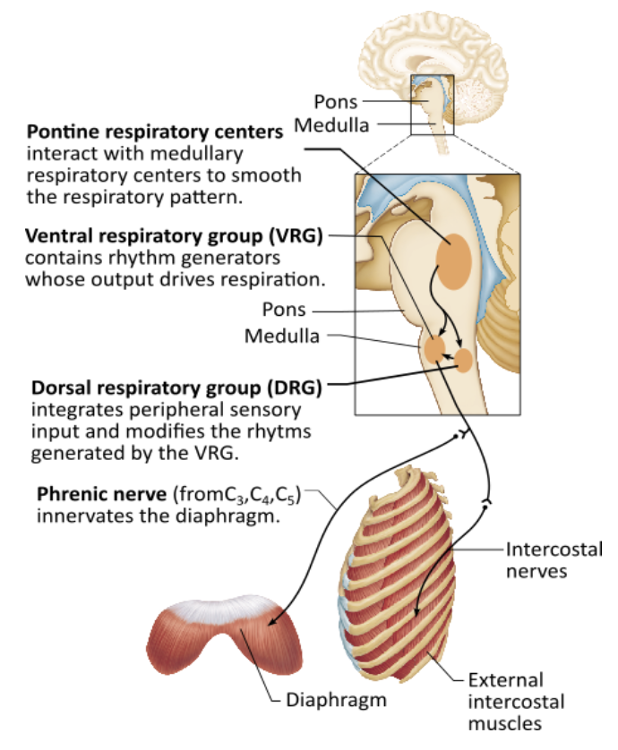
What serves as the origin for the phrenic nerve?
- the sympathetic chain
- the cervical plexus
- the midbrain
- the brachial plexus
the cervical plexus
Ex.
The cervical plexus is the origin of the phrenic nerve, which descends through the thorax to innervate the diaphragm.
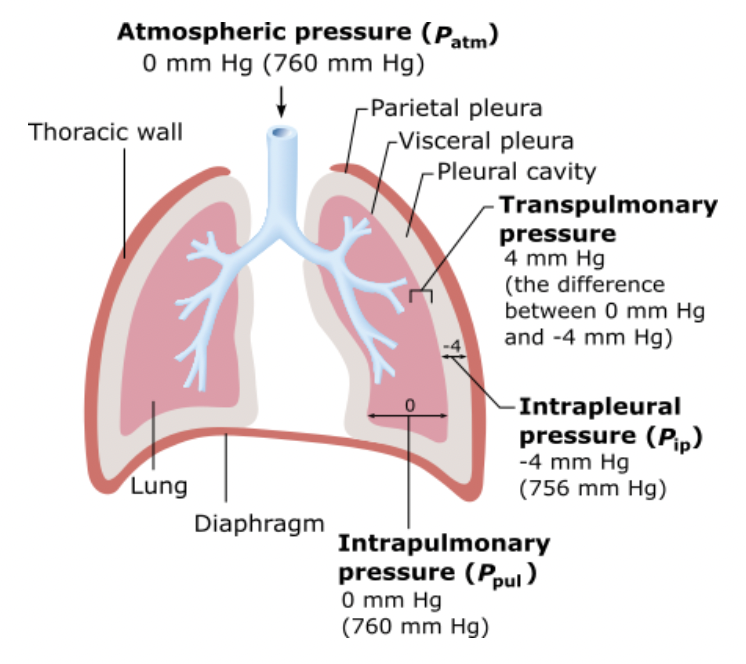
Which of the following pressures rises and falls with the phases of breathing but eventually equalizes with the pressure of the air in the environment?
- intrapulmonary pressure
- transpulmonary pressure
- atmospheric pressure
- intrapleural pressure
intrapulmonary pressure
Ex.
Intrapulmonary pressure rises when the thorax volume is reduced (during exhalation) and drops when the thorax volume rises (during inhalation). When there is no change in thorax volume, intrapulmonary pressure equalizes with the atmospheric pressure.
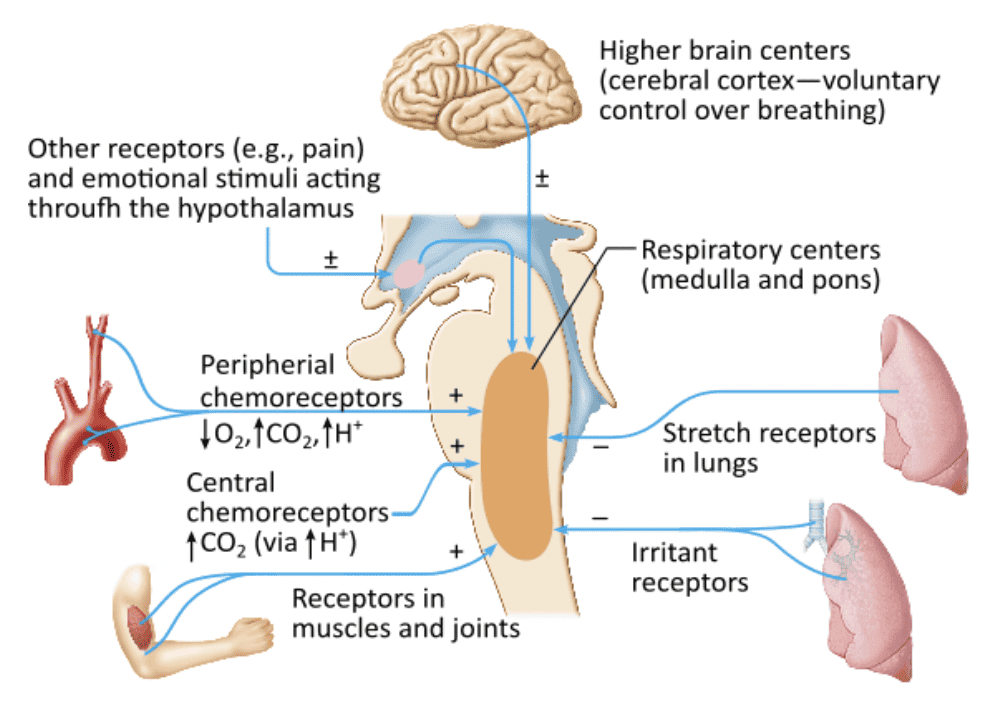
Which of the following conditions or scenarios increases the respiratory rate?
- alkalosis
- an increase in partial pressure of oxygen
- a drop in carbon dioxide levels in the blood
- acidosis
acidosis
Ex.
A low pH in blood indicates a high level of carbon dioxide, which in turn increases the urge to ventilate the lungs.
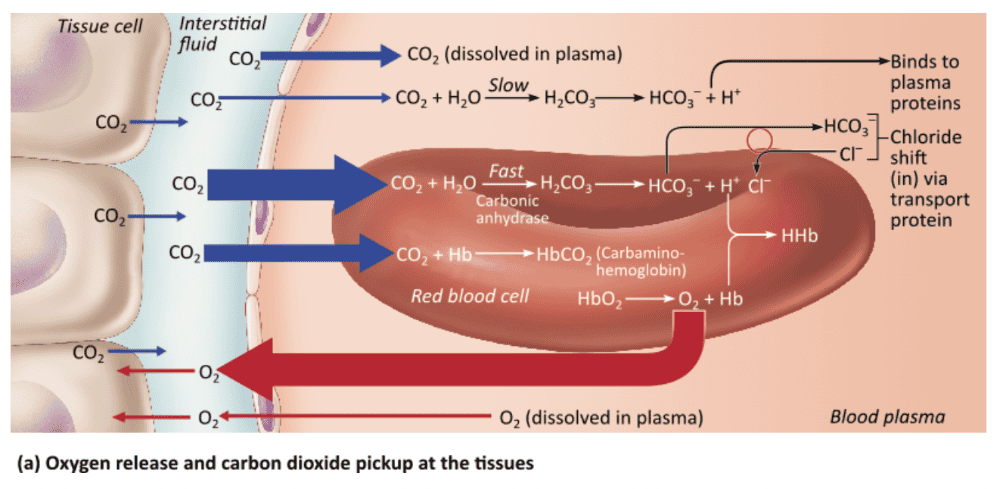
What is the most common method of carbon dioxide transport?
- dissolved in the plasma
- chemically bound to hemoglobin as carbaminohemoglobin
- chemically bound to hemoglobin as oxyhemoglobin
- as bicarbonate ions in the plasma
as bicarbonate ions in the plasma
Ex.
Carbon dioxide reacts with water inside RBCs to form carbonic acid, which dissociates into bicarbonate and hydrogen ions. About 70% of carbon dioxide travels in the plasma as bicarbonate.
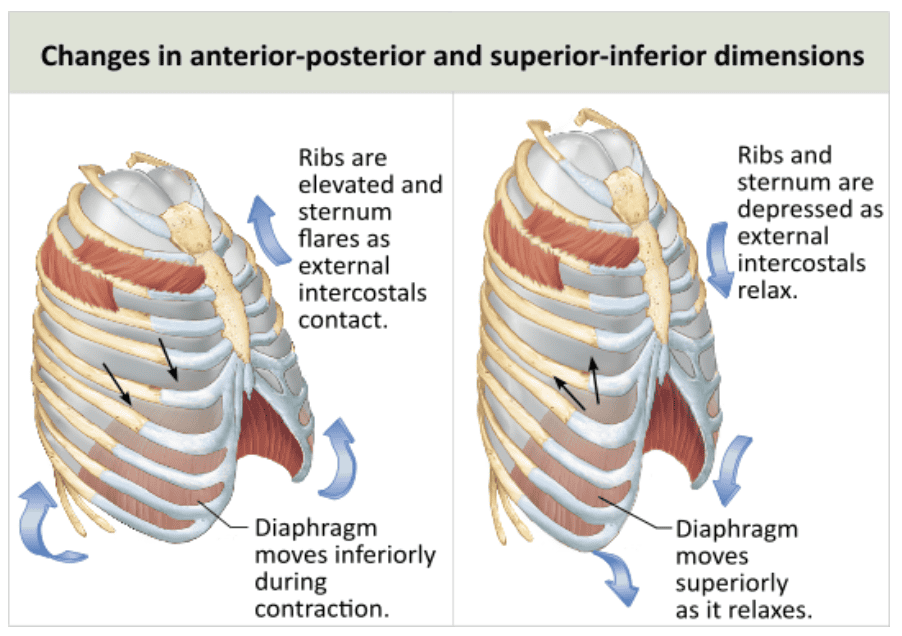
Which muscles are activated during forced expiration?
- the internal intercostal, oblique, and transversus muscles
- the diaphragm and internal intercostal muscles
- the diaphragm and external intercostal muscles
- the scalenes, sternocleidomastoid, and pectoralis minor muscles
the internal intercostal, oblique, and transversus muscles
Ex.
During forced expiration, the internal intercostal, oblique, and transversus muscles contract to increase the intra-abdominal pressure and depress the rib cage.
In pneumothorax, the lung collapses because ______.
- intrapleural pressure is lower than transpulmonary pressure
- intrapleural pressure is equal to intrapulmonary pressure
- intrapulmonary pressure is lower than transpulmonary pressure
- intrapulmonary pressure is higher than atmospheric pressure
intrapleural pressure is equal to intrapulmonary pressure
Ex.
Intrapleural pressure (Pip) is the gas pressure within the pleural cavity, while intrapulmonary pressure (Ppul) is the gas pressure within the alveoli. Normally Pip is less than Ppul to maintain lung expansion. If Pip exceeds Ppul, then the lungs collapse.
The local matching of blood flow with ventilation is ________.
- ventilation-perfusion coupling
- chloride shifting
- the Haldane effect
- the Bohr effect
ventilation-perfusion coupling
Which of the choices below determines the direction of respiratory gas movement?
- partial pressure gradient
- the temperature
- molecular weight and size of the gas molecule
- solubility in water
partial pressure gradient

Which of the following stimuli is the most powerful respiratory stimulant to increase respiration?
- an increase in blood pH
- rising carbon dioxide levels
- reduced oxygen levels
- arterial pH
rising carbon dioxide levels
Ex.
Excessive carbon dioxide is a powerful stimulant to respiratory rate, as the brain assumes that when carbon dioxide levels are high, the oxygen levels must be correspondingly low.
Which of the following determines lung compliance?
- flexibility of the thoracic cage
- muscles of inspiration
- alveolar surface tension
- airway opening
alveolar surface tension
Air moves out of the lungs when the pressure inside the lungs is ________.
- equal to the pressure in the atmosphere
- greater than the intra-alveolar pressure
- less than the pressure in the atmosphere
- greater than the pressure in the atmosphere
greater than the pressure in the atmosphere
What is the primary form in which carbon dioxide is carried in blood?
- dissolved in plasma
- chemically bound to hemoglobin
- as a bicarbonate ion in plasma
- as carbonic acid in plasma
as a bicarbonate ion in plasma
Ex.
About 70% CO2 is transported as bicarbonate. When dissolved CO2 diffuses into RBCs, it combines with water, forming carbonic acid (H2CO3). H2CO3 is unstable and dissociates into hydrogen ions and bicarbonate (HCO3 -) ions. Once generated, bicarbonate moves quickly from the RBCs into the plasma, where it is carried to the lungs.
The lung volume that represents the total volume of exchangeable air is the ________.
- inspiratory capacity
- tidal volume
- expiratory reserve volume
- vital capacity
vital capacity
The amount of air that can be inspired above the tidal volume is called ________.
- inspiratory reserve volume
- vital capacity
- expiratory capacity
- reserve air
inspiratory reserve volume